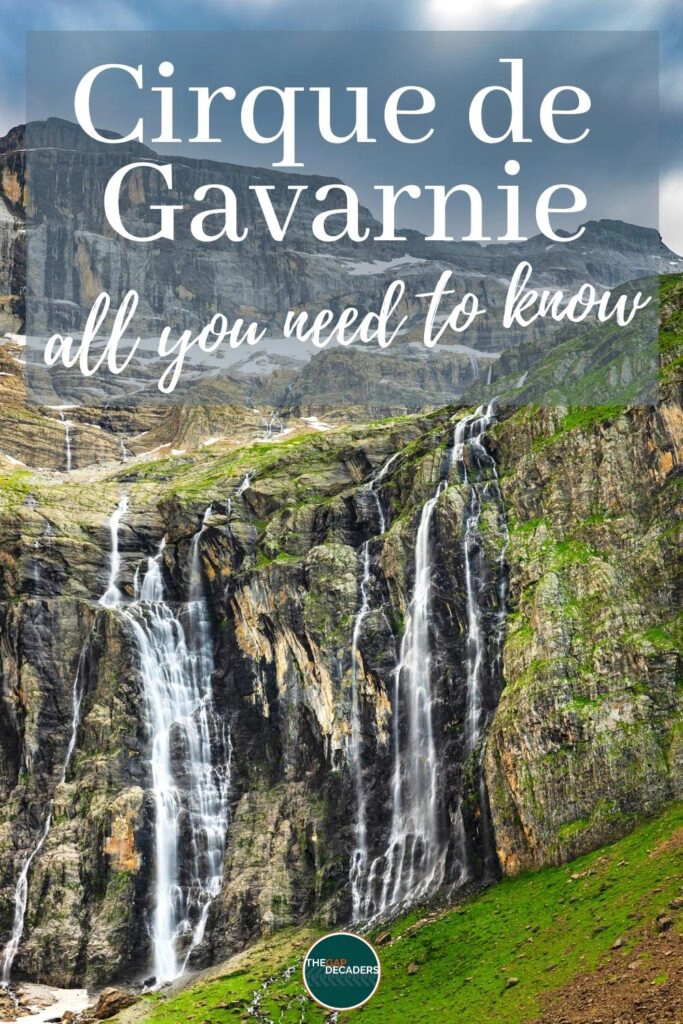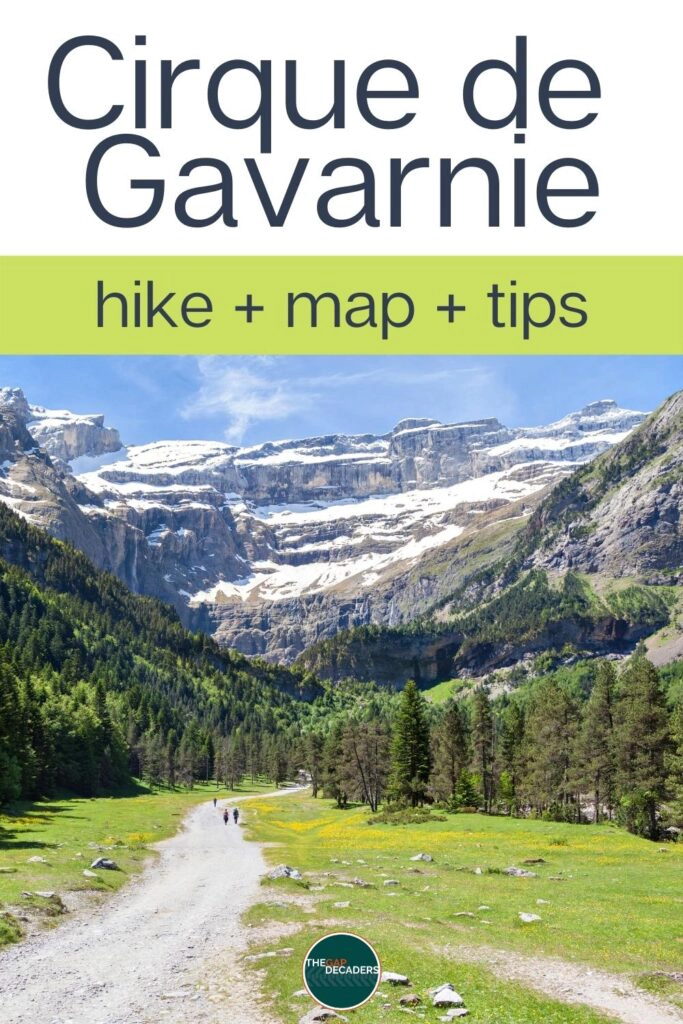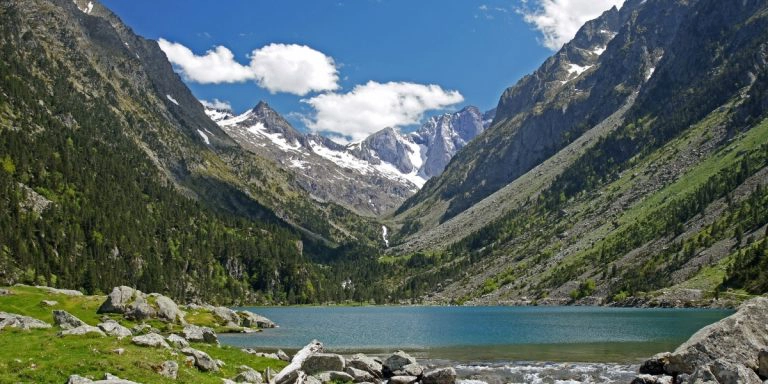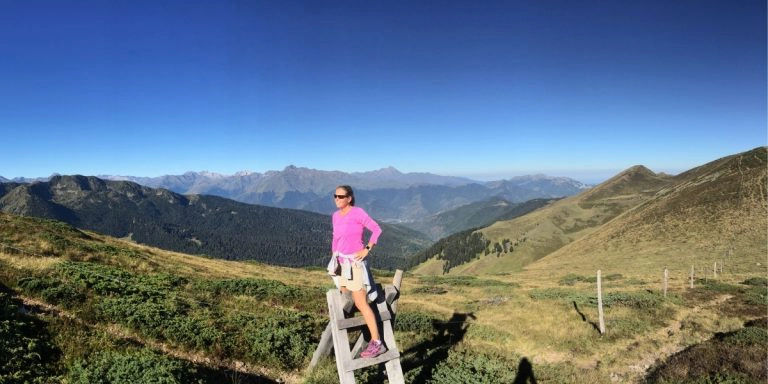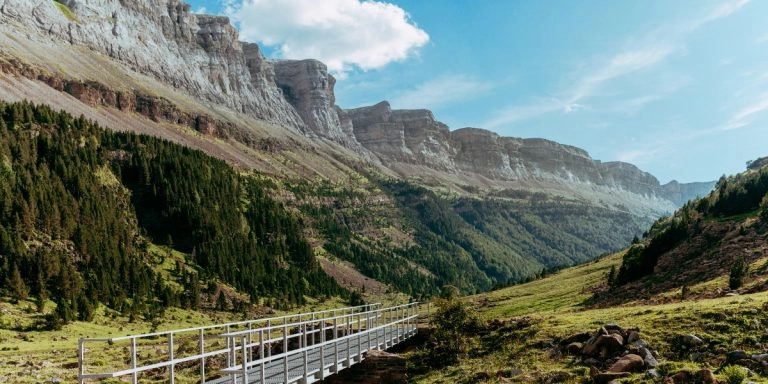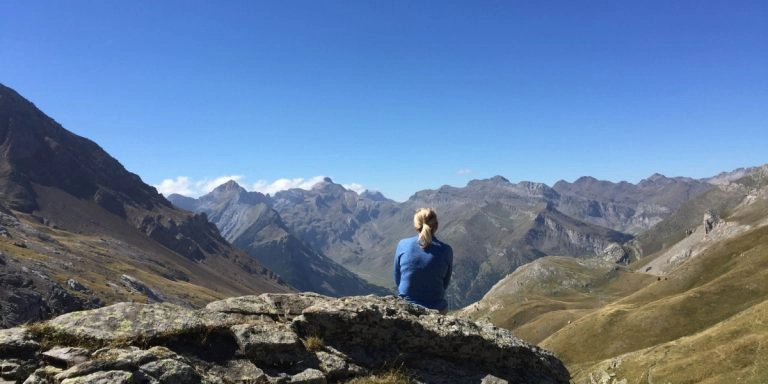This post may contain affiliate links, from which we earn an income. Click here to read our affiliate policy.
Cirque de Gavarnie Hike, Hautes-Pyrénées, France
Gavarnie, deep in the Pyrenees National Park, is probably the best example of the vast Pyrenean limestone cirques, which were created by huge glaciers thousands of years ago.
By far the best way to experience this stupendous feat of nature, is to take the relatively easy and very family friendly hiking trail to the Cirque, where you’ll enjoy spectacular views of the many waterfalls that cascade down the vertical walls of this natural amphitheater.
The towering 1,700m high walls and vast 14km circumference are surrounded by the 3000m plus giants of Mont Perdu, Marbore Peak, Taillon, and the distinctive notch of Breche de Roland, the place of so many legends. Within the natural wonder of the Cirque you will find Gavarnie Falls, one of Europe’s greatest waterfalls, with its 422m sparkling vertical drop.
The landscape around Gavarnie is home to the imposing Mont Perdu landscape, which straddles the Franco-Spanish border. On the French side are the incredible lush Cirques of Troumouse and Estaube, as well as Gavarnie. On the Spanish side, you’ll find the dramatic and parched canyons of Ordessa, Pineta and Anisclo.
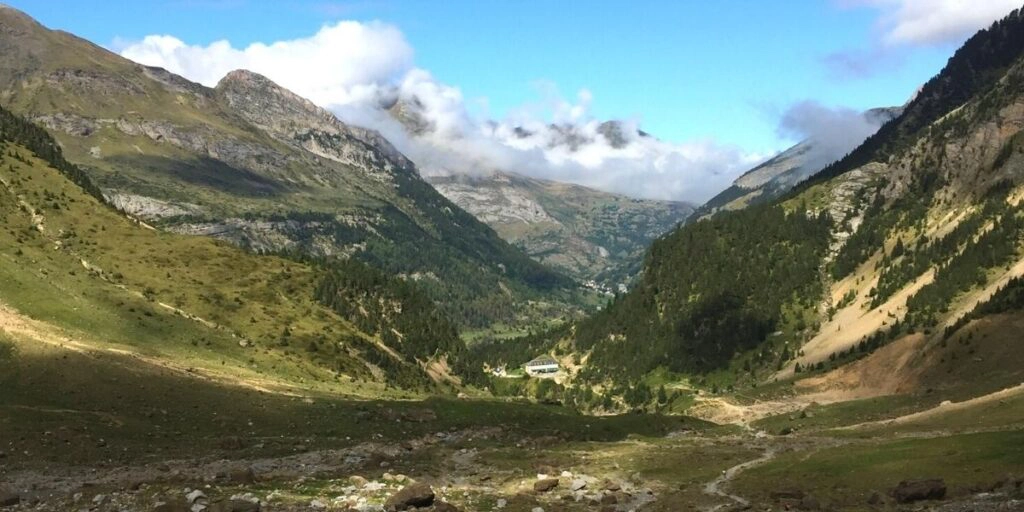
Cirque de Gavarnie Walk At a Glance
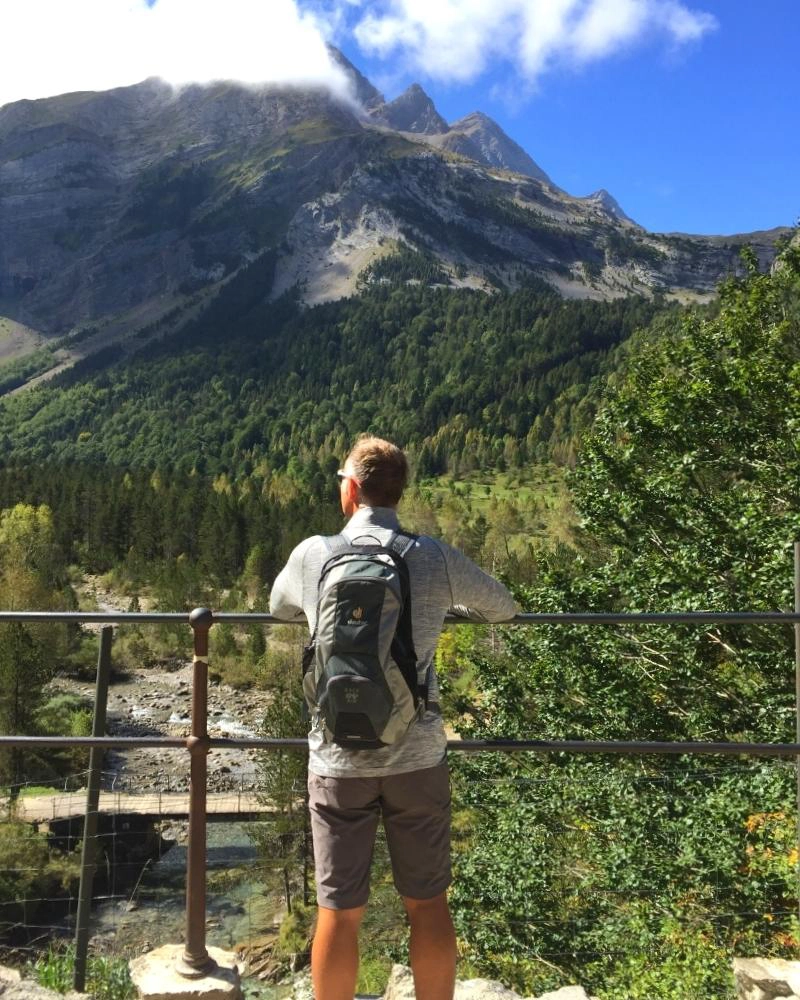
Cirque de Gavarnie Tips & Info
Cirque de Gavarnie Weather
May to October is the best time for hiking in the Pyrénées mountains of France. Outside of these times, there may well be snow below 2,500m and the weather can become very changeable. Only experienced hikers should head out between November and April.
Whenever you hike the Pyrenees, check the weather before setting off and make sure you have appropriate clothing for the forecast.
Is this your first time visiting France? Get all the information you need in our France Travel Guide, including what to pack, the best time of year to go, getting there and practical tips to help you have the best trip!
Equipment
Hiking boots are not necessary for this walk. Sturdy trainers or approach shoes will be sufficient. Poles may be helpful for the final scramble to the waterfall, or if you’re not sure of foot.
Always carry a waterproof layer and warm dry clothes. Take a packed lunch or snack and plenty of water, as well as a sunscreen and hat in hot weather, as well as a mobile phone.
Cirque de Gavarnie How to Get There
By car – the commune of Gavarnie-Gèdre in the central Pyrenees is around a 1 hours drive from the nearest large town of Lourdes.
By train – there is a direct SNCF train from from Paris to Lourdes, taking around 4 hours and 30 minutes.
By bus – the 965 bus line takes 1 hour 20 minutes from Lourdes, passing through Cauterets along the route.
Gavarnie Parking
Cars – there is a lot of paid parking along the sides of the main roads through the village. In summer, you need to get there early to secure a space. Cirque de Gavarnie parking costs around €5. The village is closed to traffic from 9am to 5pm daily so make sure to arrive outside of these times.
Motorhomes – As you head out of the village of Gavarnie on the D923, there is an aire with services on the left side of the road, about 2km outside the village. Expect to pay €8-10 a night for superb Cirque de Gavarnie camping, motorhome style! Or, head further up the D923 to the Col de Tentes for fantastic motorhome wild camping.
Family Friendly
The Cirque de Gavarnie walk can be as family friendly as you want to make it. The route to the cirque is well maintained and level underfoot, with minimal altitude gain, and at 8.5km or 5.2 miles, it’s a kid friendly distance!
Kids will love running on ahead or exploring off track. Getting up to the main Gavernie falls is a bit of a scramble and may be too much for smaller children.
Gavarnie Facilities
There are lots of bars and shops in Gavarnie village and plenty of Gavarnie hotels too. The last toilets are soon after the start, on the left of the main street.
Just before the Cirque proper, there is the Cirque de Gavarnie Hôtel where you can get a cold drink and use the loo.
Crowd Levels
There will always be lots of people hiking Cirque de Gavarnie in the Pyrenees mountains in summer, especially in places where the difficulty level is easy.
In high season the crowd levels at Gavarnie can be extreme. Start your hike early to enjoy people free tracks and views, or visit in May, June or September when there will be fewer people around.
Other Things to Know
The Cirque de Gavarnie is a UNESCO World Heritage Site as well as being in the Parc National des Pyrenees. This means strict regulations apply to protect the nature and wildlife in the area.
Dogs are not allowed, even on a lead. You must not pick wildflowers or start a fire, and there is strictly no camping. No aerial or shooting type sports are allowed and you cannot ride a mountain bike or use a motorised vehicle. Basically, respect the national park and its surroundings.
Cirque de Gavarnie Hiking Map
How to use this map – Use your fingers (or computer mouse) to zoom in and out. Click or touch the icons to get more info about a place, and click the arrow in the box top left to open the index. To add to your own Google Maps account, click the star next to the title of the map.
The Cirque de Gavarnie Hike
Once described by writer Victor Hugo as the “Colosseum of nature”, the Cirque de Gavarnie is a pretty awe-inspiring place. This classic French hike will take you through beautiful countryside on well maintained and signed paths, to the Cirque de Gavarnie itself, the best part of the hike.
The Cirque itself is full of wild flowers and littered with sheep, goats and incredible waterfalls rushing down the sheer vertical walls of this behemoth of nature. At 422m, the Cirque de Gavarnie waterfall is the highest in mainland France and the fifth highest in Europe (and you can stand right underneath it!)
- To start the Gavarnie trail, head downhill from the main car park to the crossroads in the centre of Gavarnie village. Follow the main street south and after the bend take the left fork. The Cirque is visible from here, even from a distance you can see how it dominates the skyline and landscape.
- Follow this road as it runs out of the village and along the pretty river, called Gave de Gavarnie. There are a couple of bars on the other side of the river. Cross the bridge just after these and follow the road until it becomes a gravel track, the starting point of the Cirque de Gavarnie trek.
- Keep on this track, perhaps stopping at the traditional stone bridge, the Pont de Nadau, which crosses the gave de Gavarnie, now a stream. Do not cross the bridge (although it’s a great spot for a photo op) and keep following the main track.
- From here you’ll start to notice the track inclining as you pass through forest and the UNESCO World Heritage sign. The views start to become really stunning, with the Cirque ahead in all its glory.
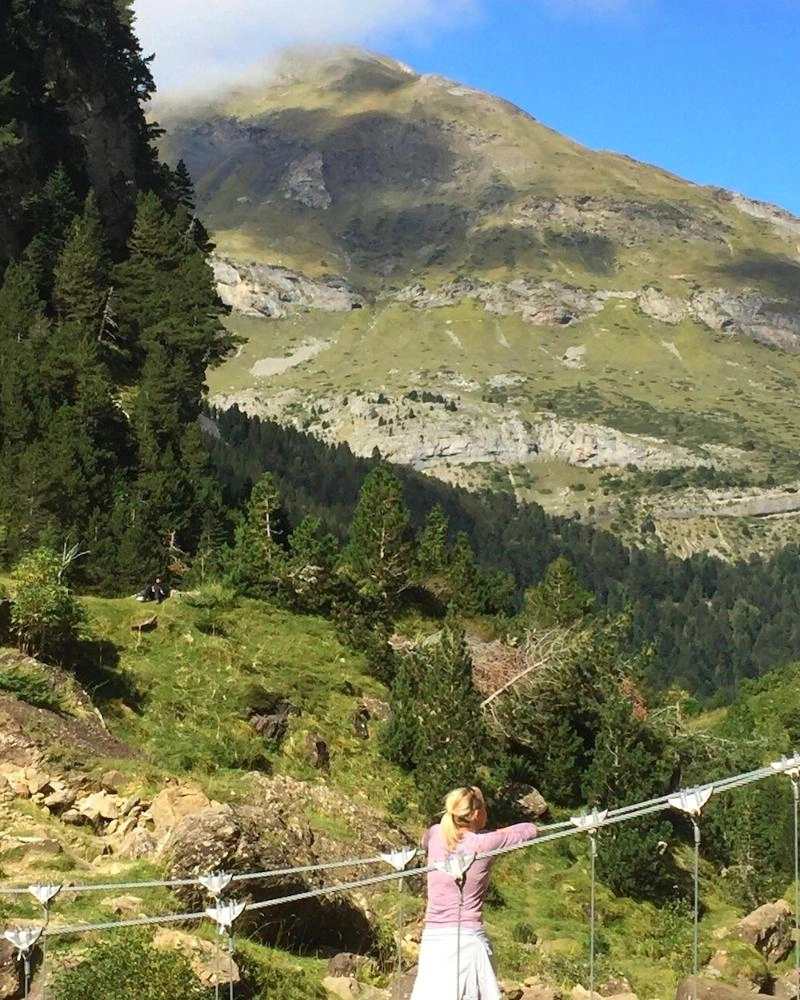
- The track starts to descend to open ground and then rises gently up to to around 1400m. From here, it becomes quite steep for a few hundred meters, the most difficult part of this hike. You’ll soon spot the Hotel du Cirque in the distance, with the Cirque and waterfalls providing breathtaking views.
- You are now at 1570m elevation, look up to the highest walls of the Cirque, where the peaks are over 3000m and may well still be covered in snow. Somewhere up there is the Brèche de Roland (or Roland’s Breach), a gap in the upper layer of the Cirque at 2807m on the border with Spain.
- The huge glistening grande cascade de Gavarnie waterfall of the Gavarnie Cirque can be approached continuing on the track, until you start to ascend the 150m of shale required to feel the mist on your face. Getting to the tallest waterfall in France can be a tricky ascent and descent, as the shale is loose and steep. If you’re not sure-footed, poles may help.
Literally on the other side of the Cirque de Gavarnie, over Mont Perdu, or Monte Perdido (which means ‘hidden mountain’ in Spanish, as it cannot be seen from France) is the Circo de Soaso in the Ordesa National Park in Spain.
It is possible to hike to Roland’s Breach and across the Spanish border between the cirques, staying at the the Refuge des Sarradets on route, a relatively easy hike from the Col de Tentes.
What is Roland’s Breach?
Roland’s Breach, or Brècha de Roland, is the name of a natural gap in the Pyrenees, which is situated in the Ordesa y Monte Perdido National Park the border of Hautes-Pyrénées, France and Aragón, Spain. Measuring 40m across and 100m high, at an elevation of 2804m, the gap is a distinctive landmark in these dramatic mountains and leads into the Cirque de Gavarnie.
According to history and legend, Count Roland, one of Charlemagne’s knights, used his sword Durendal to cut the gap after being defeated during the Battle of Roncevaux Pass in Spain, in 778, so he could see France one last time before he died.
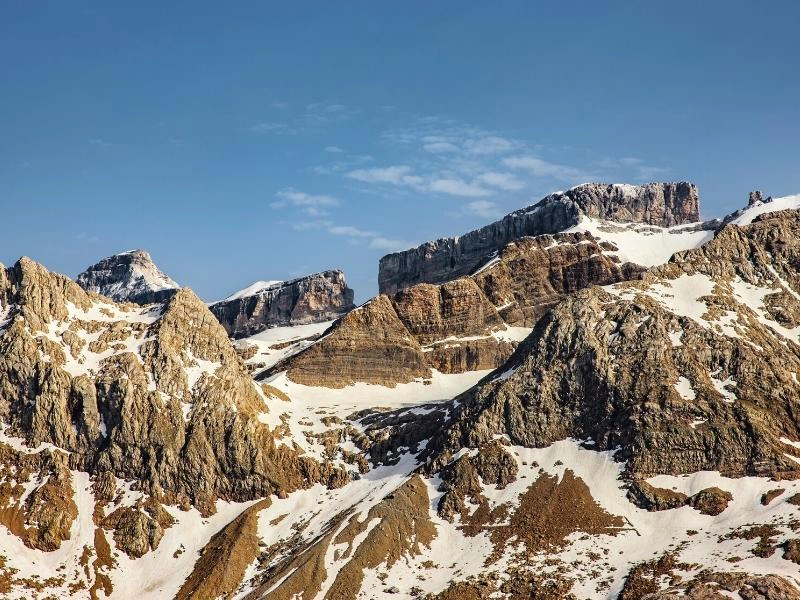
RELATED POST – A Seven Day Pyrenees Hiking Tour
Other nearby Pyrenees hiking trails you may enjoy…
Lac de Gaube – A Breathtaking French Pyrenees Hike
How to Hike Mont Ne & Lac de Bareilles
How to Hike the Circo de Soaso via Faja Pelay – Ordesa Valley
How to Hike Pic de Tentes & Port de Boucharo
Love it? Pin It!
